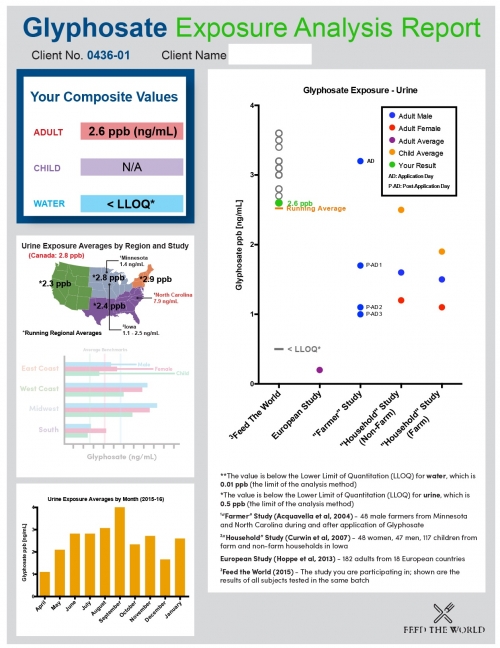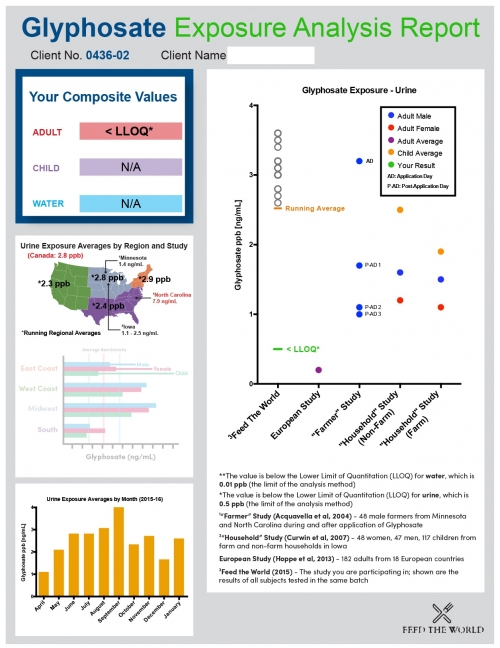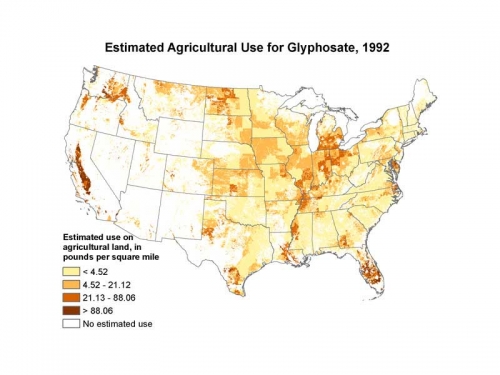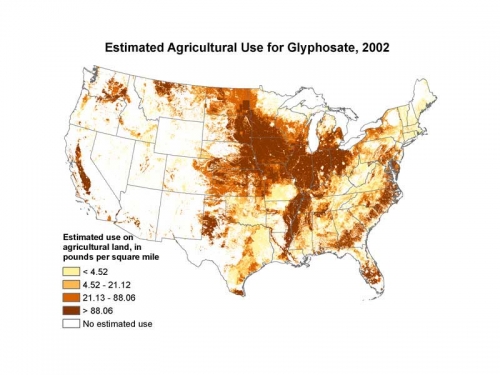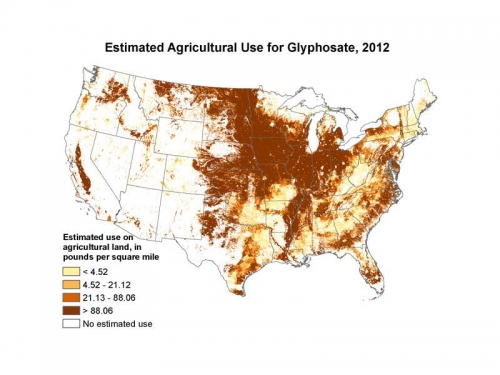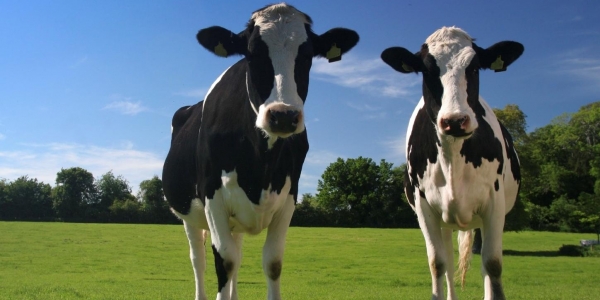Governments Are Beginning to Approach Glyphosate With Caution
While Health Canada believes that current levels of glyphosate use in the agricultural industry are safe, they did see the need to re-label RoundUp with clearer warnings of its potential health risks. This new labelling rolled out in 2015, and recommended a 12-hour restricted entry period after agricultural use, and a statement indicating it should only be applied when the “potential drift to residential or populated areas is minimal.” 10
In the U.S., the Food and Drug Administration began routine testing for glyphosate residue in February of this year.11 This is the first time such testing has been done by a federal agency in the U.S.
Meanwhile in Europe, the EU has been unable to come to an agreement on whether to ban the sale of glyphosate entirely.12 Many governments within the EU have cited environmental and health concerns as a reason to ban the sale of any herbicides containing the chemical, but the body as a whole has failed to come to an agreement.
How to Avoid Glyphosate
As the results of our test show, you can minimize the amount of glyphosate you come in contact with by eating organic, or ensuring the farms you are getting your food from a trusted, spray-free, farm. We know and trust all the farmers we deal with.
A study of a Swedish family found that during a period of eating conventional food, their urine contained a number of “insecticides, fungicides and plant growth regulators.” After just two weeks of an organic-only diet the results were very different. Researchers noticed a drop in pesticides after only one day, and after the full two weeks there was “very little evidence of the pesticides and other compounds in their follow up urine samples.” It’s never too late to make the change.
The Big Picture
We chose to discuss Glyphosate as a danger because of the massive quantities of it that are being used in the world, and through our simple test have shown that it affects Calgarians. The dangers of pesticides are not just a Glyphosate issue, however. We point the interested reader to an excellent summary of numerous studies put together in 2015 that outlines the many pesticides used in agriculture, and why we should be concerned of the potential negative effects they are causing to health. We leave you with an excerpt from those conclusions:
"Many synthetic pesticides used in agriculture are persistent and pervasive in the environment and, as a result, we are exposed to a cocktail of chemicals through the food we consume and the environment in which we live. Evidence suggests that much of this exposure is presented as multiple mixtures of chemicals, the toxic effect of which are unknown, particularly over longer time scales (Reffstrup et al. 2010). In some cases these substances can interact such that mixtures may have unpredictable and higher toxicities than the individual components themselves. Whilst attempts have been made to describe the toxicity of these interactions, there are no accepted international guidelines in evaluating such risks. Pesticides are, of course, not the only hazardous chemicals to which our bodies are exposed on a daily basis.
There is, therefore, a compelling case and an urgent need to reduce and, wherever possible, avoid human exposures to hazardous chemicals. In the case of agrochemicals, this will require us to fundamentally rethink and change our farming systems to eliminate our exposure to synthetic pesticides and protect the health not only of particularly highly exposed and/or vulnerable groups, such as agricultural workers and children, but also the general population and wild ecosystems... "
1 Cressey, Daniel. "Widely Used Herbicide Linked to Cancer." Scientific American
2 Dykstra W. Memorandum from William Dykstra to Robert J. Taylor: Subject: Glyphosate – EPA Registration Nos. 524–318 and 524–333 – Historical Control Data for Mouse Kidney Tumours. Washington, DC: US Environmental Protection Agency (EPA); 1989.
3 Savitz, D.A. et al. 1997. "Male pesticide exposure and pregnancy outcome." Am. J. Epidemiol. 146: 1025-1036.
4 George J, Prasad S, Mahmood Z, Shukla Y. Studies on glyphosate-induced carcinogenicity in mouse skin: A proteomic approach. J Proteomics. 2010;73:951-964.
5 Thongprakaisang S, Thiantanawat A, Rangkadilok N, Suriyo T, Satayavivad J. "Glyphosate induces human breast cancer cells growth via estrogen receptors." Food Chem Toxicol.
6 Séralini G-E, Clair E, Mesnage R, et al. Republished study: "long-term toxicity of a Roundup herbicide and a Roundup-tolerant genetically modified maize." Environ Sci Eur. 2014;26(14)
7 Portier, Christoper J., et al. "Differences in the carcinogenic evaluation of glyphosate between the International Agency for Research on Cancer (IARC) and the European Food Safety Authority (EFSA)."Journal of Epidemiology & Community Health. 2015.
8 Mesnage, Robin, et al. "Transciptome profile analysis reflects rat liver and kidney damage following chronic ultra-low dose Roundup exposure." Environmental Health. August 2015; 14:70.
9 Webster, Tamsyn M Uren. "Global transciptomic profiling demonstrates induction of oxidative stress and of compensatory cellular stress responses in brown trout exposed to glyphosate and Roundup." BMC Genomics. 2015; 16:32.
10 Levinson King, Robin. "Health Canada looks to re-label weed killer Roundup." Toronto Star. April, 2015.
11 Gillam, Carey. "FDA Finds Monsanto's Weed Killer in U.S. Honey." Huffington Post. September, 2015.
12 Steinhauser, Gabriele. "EU Fails to Get Sufficient Majority in Vote to Extend Glyphosate Use." The Wall Street Journal. June, 2016.
